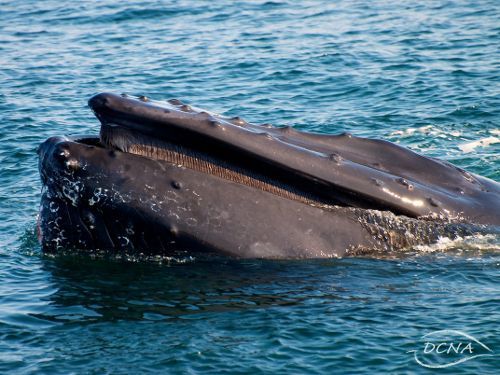
Caribische natuurbeschermers willen groot zeezoogdierreservaat
Bericht uitgegeven door Dutch Caribbean Nature Alliance (DCNA) [land] op [publicatiedatum]
Sinds de commerciële jacht op walvissen verboden is, neemt het aantal zeezoogdieren en met name walvissen toe in het Caribisch gebied. Desondanks worden zeezoogdieren in het algemeen en walvissen in het bijzonder nog steeds ernstig bedreigd. De Caribische walvissen hebben vooral te lijden onder kleinschalige jacht, verstrikking in netten en aanvaringen met schepen. Natuurbeschermers in het Caribisch gebied proberen een groot reservaat te stichten om deze ‘ambassadeurs van de oceaan’ te beschermen. Het is belangrijk dat dit grensoverschrijdend gebeurt aangezien verschillende zeezoogdiersoorten, waaronder de bultrug, in de zomermaanden vanuit noordelijker wateren naar het Caribisch gebied trekken om zich voort te planten.
Lees verder in het Engels....
Since the ban on commercial whaling there has been a slight increase in the number of marine mammals and in particular whale species in the Caribbean. Despite this increase marine mammals in general and whales more specifically are still critically endangered.

Especially in the Caribbean whales encounter significant issues with regards to their survival that include small-scale hunting, net entanglement, and ship strikes. Nature conservation practitioners in the Dutch Caribbean have been working with their counterparts within the region in establishing a Wider Caribbean Marine Mammal Sanctuary in which these magnificent animals, the ambassadors of the Ocean if you will, are protected by transnational laws. During the summer months numerous species of marine mammals, particularly Humpback Whales* (Megaptera novaeangliae), migrate through the territorial waters and EEZ of the Dutch Caribbean from their northern feeding grounds in order to mate and bear and rear their young. Since whales do not abide by human made borders, it is essential that formal protection is put in place on a transboundary basis to ensure protection and a safe environment for them.
Conservation organisations in the Dutch Caribbean have conducted baseline Marine Mammal Census projects with the goal of conducting a wide scale census of all marine mammals. Several questions were answered as a result of this study, including most numerous species and migration routes and dates. The study relied heavily on sighting forms developed by the St. Maarten Nature Foundation that were distributed to Dive Centers, Yacht Charter Companies, Marinas and Private Individuals. The most abundant marine mammal species recorded was the Humpback Whale, with 41 individuals in 2012, including calves. The second most abundant species was the Common Bottlenose Dolphin* (Tursiops truncatus), with 21 individuals; the third most abundant species was the Long-snouted Spinner Dolphin* (Stenella longirostris) with 15 individuals recorded. Various Sperm Whales* (Physeter macrocephalus) including mothers with calves were also observed. Since this is only preliminary research, much more needs to be done, including a Dutch Caribbean organised research project determining species composition and distribution, habitat, threats etc. Acoustic monitoring is another essential component of this research. However the main constraint with this, and many other conservation initiatives, is secure and continuous funding.
This baseline data shows that there is a good motive for conservation, showing that the waters of the Dutch Caribbean are an important area for marine mammals. It is essential that a case be made for the establishment of a Marine Mammal Sanctuary for the Dutch Caribbean.
Not only is it important to safeguard these species, but also sensitisation and education of both the local population and visitors to the islands are essential. Therefore it is also necessary to conduct a multi-island educational program that showcases, highlights and edifies the plight of cetaceans. Additionally, there is a push for regulated marine mammal watching excursions which would be offered to patrons and the local populations alike. It is the belief that protection should involve small-scale and low-impact commercial observation of the animals in the wild, while simultaneously gathering important research data.
* Humpback Whale = Bultrug; Common Bottlenose Dolphin = Tuimelaar; Long-snouted Spinner Dolphin = Langsnuitdolfijn of Spinnerdolfijn; Sperm Whale = Potvis
Text: Tadzio Bervoets, St. Maarten Nature Foundation
Picture: Kai Wulf, Saba Conservation Foundation
Picture shows a Humpback Whale (Megaptera novaeangliae)
